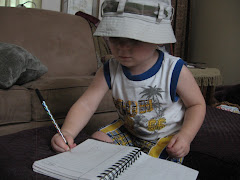Mourlevat, Jean-Claude. THE PULL OF THE OCEAN. Translated by Y. Maudet. New York: Random House, 1999. ISBN 0385733488
2. PLOT SUMMARY
Based loosely on Charles Perrault’s fable “Tom Thumb,” seven brothers, three sets of twins led by their youngest brother, flee from their abusive parents’ home in the belief that their parents intend to harm or kill them. Traveling west across France, the boys head toward the Atlantic Ocean. The book chronicles their journey across the countryside as they attempt to reach the coast under the direction of their unusually small, mute, yet wise and resourceful brother Yann.
3. CRITICAL ANALYSIS
This novel is immediately engaging as the reader is plunged into an adventure where seven brothers, aged 10 to 14, head into a stormy night in order to escape the fate they believe awaits them at the hands of their parents. Each chapter, told by one of the brothers or by one of the people they encounter as they travel toward the coast, offers an insight into the difficulties the children encounter as they find themselves in the world by themselves. A social worker, a truck driver, and a bakery owner, among others, offer fascinating insights into what they see as they encounter the boys. The journey is not easy, and most readers will have difficulty putting the book down until they discover the fate of the brothers.
The book was originally written in French, and the names of the characters and places reflect the setting of France, its countryside and people. However, while the names of people and places reflect the culture from which the story comes, the children could be any children growing up in a place where life is hard and families struggle just to survive. The people the boys encounter as they travel toward the ocean do not seem different from those the boys might have encountered were they traveling across rural America, which will make it accessible to U.S. children. The story is the driving force, while the cultural setting is a backdrop, adding texture to the adventure in which the boys find themselves. Readers looking for a book with a strong international flavor will not find that here. In fact, as the boys headed west to the Atlantic Ocean, I found myself thinking, “The Atlantic Ocean is not to the west. That would be the Pacific,” only to have to remind myself that the children were not in America, but in France, where the Atlantic Ocean is to the west.
The book is an easy read – the translation is friendly and the story engaging enough to hold the attention of young teen readers who will want to know what happens. Many, if not most, children have thought about being on their own, and to read a story where children must fend for themselves is a way to experience that vicariously. However, the ending will probably feel lacking to most readers. Too many questions are left unanswered, such as why the youngest brother decided to run away, where he is heading, and whether or not anyone ever finds out what happens to him and what the brothers think about being intentionally misled on this adventure. The conclusion might feel somewhat unsettling and unsatisfying to readers who like a tidy ending.
This book won the Batchelder award for outstanding book originally published outside the United States.
4. REVIEW EXCERPTS
*Publisher’s Weekly: “Mourlevat enchantingly blends the harshly real and the make-believe, with the latter tipping the balance as this effectively haunting, fluidly translated tale comes to a close. Ages 12-up.”
*School Library Journal: “A well-crafted mystery awaits anyone reading this fabled jigsaw puzzle.”
*Booklist: “The ending leaves readers a bit at sea, but the story is intriguing, and the relationship among the brothers is heartwarming.”
5. CONNECTIONS
1. Once finished, readers may have many questions (and teachers can guide the readers toward questions) that would be great for formal or informal conversations that help them stretch their reading skills of prediction, understanding author’s craft, application, etc. Questions might include:
- Did Yann mislead his brothers on purpose in order to get them to help him escape his home and achieve his dream of getting to the ocean?
- If he did, was he right to do so?
- What happened to his brothers? How do you think they felt upon finding out the the parents were not going to harm them, but rather the kittens?
2. Students can compare this story to Perrault’s “Tom Thumb.”
3. Students can compare the experiences of the boys to the experiences of children where they live. How are they boys’ experiences like their own or those they know?



No comments:
Post a Comment